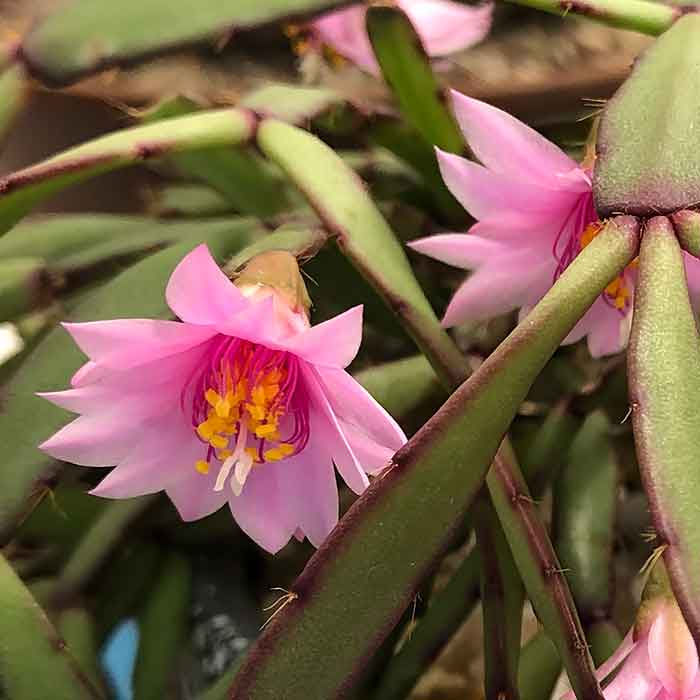Originally from southern Brazil, Rhipsalis rosea is commonly called the ‘Rose Easter Cactus’. Also known as Hatoria rosea and recently reclassified as Rhipsalidopsis rosea it is grown for the rosy pink flowers as well as the foliage.
The flowers are large and fragrant and the easy care nature make Rhipsalis rosea suited to growing indoors or outdoors depending on climate and care.

This is naturally an epiphytic plant that has deep green foliage that tends to turn to red or purple when exposed to stress factors such as direct sun or cold.
How to Grow Rhipsalis rosea
In its natural habitat it grows at higher elevations so does not require require a lot of warmth to grow well.
- A free draining potting mix in a hanging basket works well. A specialist cactus mix is suitable.
- Grow Rhipsalis rosea in a part shaded position with a little morning sun.
- Provide good airflow and humidity tom prevent the plant from dropping leaf segments.
- Protect from frosts.
- Water regularly allowing the soil to dry a little between waterings.
How to Flower Rhipsalis rosea
You need to provide long periods of darkness over winter months to improve flowering. You also need to control watering.
- Find a position in filtered light with some morning sun.
- Cover the plant with some Hession or Shade Cloth. Covering with Hession lowers light levels and mimics the amount of light it would get in the natural environment.
- Water infrequently, allowing the soil to dry between waterings and watch for flower buds to appear.
- Once flower buds appear, remove the Hession.
- Water and fertilise through flowering and then cut back on water for 6 -8 weeks to give the plant a dormancy.
Propagation
Generally propagation is easy from segment cuttings as long as you provide a moist soil (not wet).
Further information
Rhipsalis rosea has a number of synonyms including : Hatoria rosea, Rhipsalidopsis rosea, Schlumbergia rosea and others.
Common Names include: Rose Easter Cactus, Pink Star Cactus, Whitsun Cactus and others

